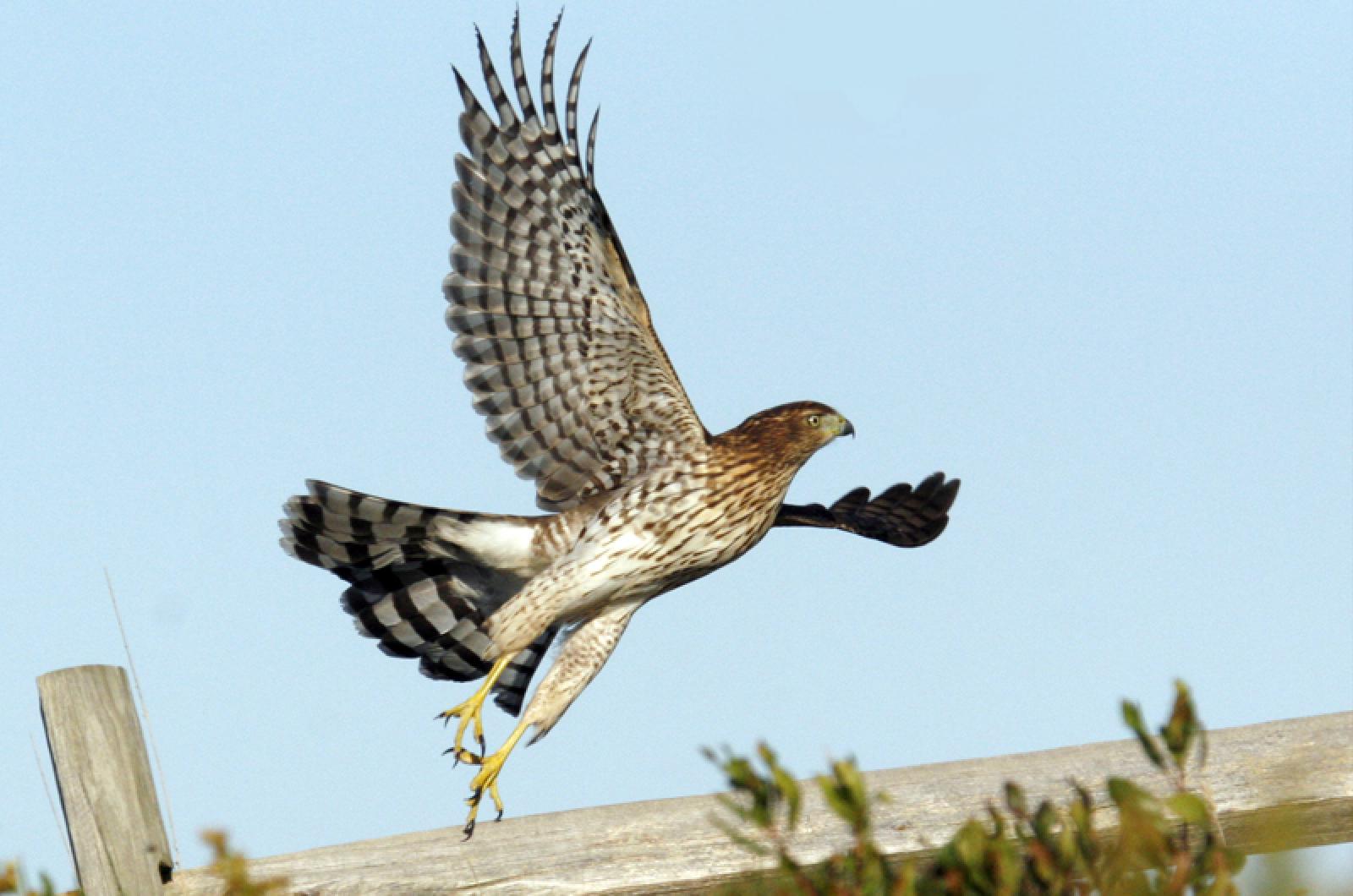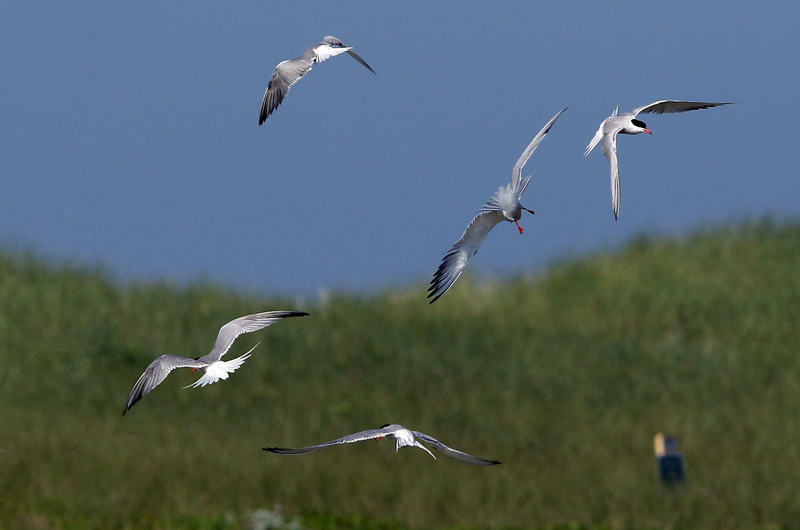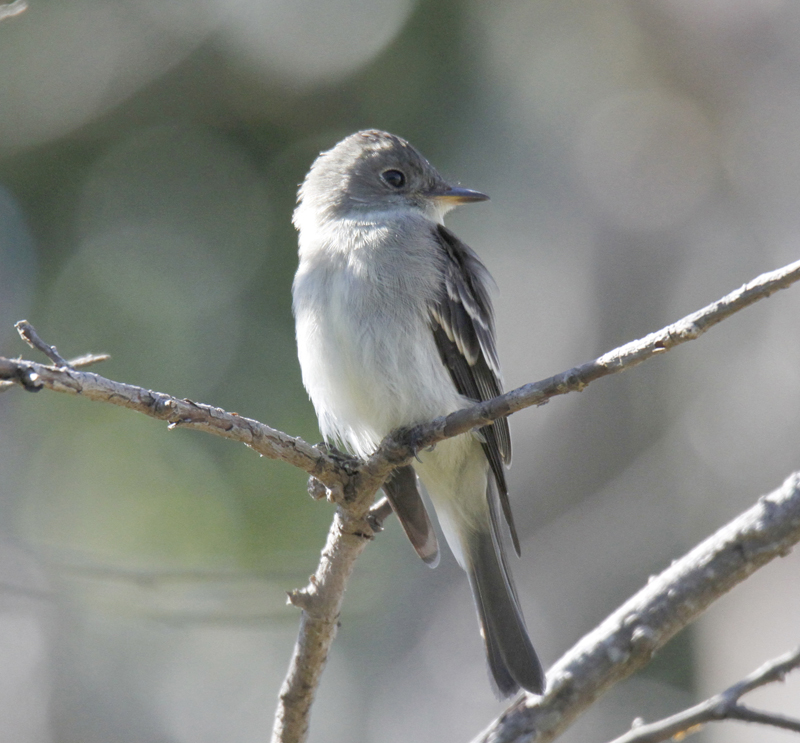An immature Cooper’s hawk landed in an old oak tree near the parking lot at Cedar Tree Neck on August 19. It was perched on a big old branch that rose upward at about a 30 degree angle. After a minute it flapped its wings once and glided about 20 feet further up and out the branch. A minute later it repeated that action. Not too unusual.
But then it did get unusual, doing something I have never seen before. It ran up the branch for another 20 feet. Yes, it ran on alternating left and right talons further out the branch. A minute later the hawk flew off.
Now I have seen birds run before. Piping plovers and other shorebirds will run across the beach, and bobwhite quail will run across open ground. I have seen gray catbirds, eastern towhees and song sparrows run across the ground. And I have seen chickadees, nuthatches and other woodlands birds walk along branches or flit from branch to branch when foraging. Many birds hop along the ground, keeping both feet together rather than striding on alternate legs. And hawks usually fly or perch, not run.
Observing such behavioral oddities is but one of the many things that makes observing nature so much fun.
Bird Sightings
On August 20, Soo Whiting observed a classic fishing scene — double crested cormorants were feeding on small fish in Tisbury Great Pond, causing the school of fish to rise closer to the surface where they can then be attacked by the dive-bombing terns. There were four species of terns feeding on the fish: least, common, Forster’s and one black tern. Can anyone explain why the school of fish rises to the surface rather than dive to the bottom? If they did the latter they would not be exposed to the diving terns.
While Ms. Whiting was observing the terns and cormorants, she also observed four species of gulls — laughing, ring-billed, herring and great black-backed — all loafing on Big Sandy, which is part of Tisbury Great Pond. Oystercatchers and greater yellowlegs were also present.
Charlie Kernick, Sioux Eagle and Ms. Whiting all have impressive spreads of hummingbird feeders, and lots of hummers taking advantage of the sugar water.
Speaking of hummers, I noticed that the touch-me-nots, or jewelweed, are starting to bloom. They are the small orange wetland flowers whose seed pods explode when touched. These flowers are a favored wild source of nectar and insects for the hummers.
Jeff Bernier found a spotted sandpiper on August 19. His was on Norton Point, and there were also least sandpipers. He and others have noted that the young of the year shorebirds are now appearing on our beaches, joining up with the adults that have been here for a month or more. Just in case shorebirds were not hard enough to identify, each species can now appear in varied plumages, either juvenile or adult, and the adults may be anywhere between their breeding and non-breeding plumages.
On the August 19 my guided birding tour had excellent looks at three belted kingfishers at the Oak Bluffs Pumping Station.
In addition to the Cooper’s hawk mentioned in the first part of this column, I also noted a spotted sandpiper foraging along the shores of Cedar Tree Neck Pond on August 19. The redstarts that were so abundant and conspicuous during the breeding season are gone, but red-eyed vireos and eastern wood-pewees are still singing sporadically in the woods. That is about all the bird song there is in the heat of mid-day. There is more song at dawn but even at dawn it is so much quieter that it was a few months back. The breeding season is over and birds do not sing as much.
Southward migrating shorebirds and songbirds are passing through, so go look for them and please be sure to report your sightings to birds@mvgazette.com.
Robert Culbert leads Saturday morning guided birding tours and is an ecological consultant living in Vineyard Haven.







Comments (2)
Comments
Comment policy »